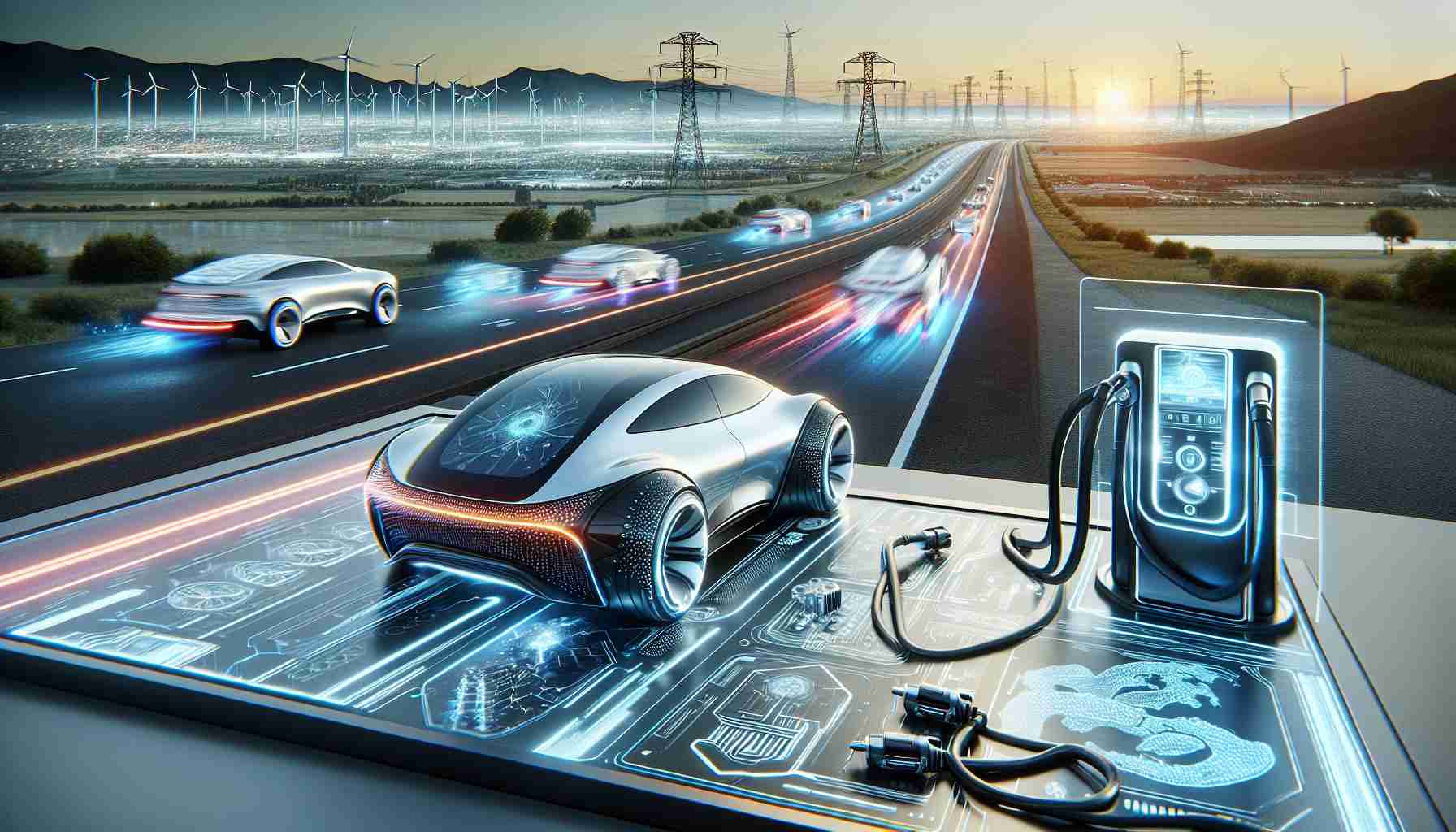Shifting Dynamics in Electric Vehicles
The electric vehicle (EV) market in the United States is at a crossroads, catalyzed by Rivian Automotive Inc.’s significant stock decline and recent policy adjustments that could alter the entire landscape of eco-friendly transportation. A major development includes the withdrawal of a crucial executive order from 2021, designed to enhance EV sales, which raises significant concerns in both the automotive industry and environmental circles.
Impacts on Infrastructure and Innovation
One critical setback is the suspension of a $5 billion initiative intended to improve the EV charging network. This decision threatens to stall U.S. efforts toward sustainable transportation alternatives. The consequences could extend beyond national borders, potentially causing other nations to rethink their environmental commitments as global efforts to combat climate change are jeopardized.
With a slower adoption rate of electric vehicles, reliance on traditional gasoline-powered cars could intensify, worsening air quality and public health challenges. This downturn also raises concerns among potential EV buyers, who may reconsider their investments in electric vehicles due to fears about infrastructure reliability.
The Road Ahead
Despite these hurdles, analysts remain cautiously optimistic about the future of EVs, emphasizing that innovations in technology may pave the way for a resurgence. Companies are focusing on advancements in battery efficiency and charging systems to combat the impacts of inadequate infrastructure. However, the current landscape demands strategic action from both industry leaders and policymakers to ensure the electric vehicle revolution continues.
Wider Implications of Electric Vehicle Market Dynamics
The shifting dynamics in the electric vehicle (EV) market extend far beyond automotive sales, impacting societal attitudes towards sustainability and reshaping the global economy. As investments in sustainable technologies fluctuate, the economic viability of the EV sector faces scrutiny, potentially undermining job creation in green industries. Moreover, the recent retreat from pro-EV policies may signal to consumers that governments prioritize short-term gains over long-term environmental goals.
Influence on Society and Culture
Public sentiment is swayed by these market shifts. With rising uncertainty about EV infrastructure, consumers are increasingly hesitant to transition from traditional vehicles. This hesitation is compounded by a culture of convenience; the reliability of charging stations is becoming a pivotal consideration for many buyers. A failure to address these issues could lead to a pervasive culture of skepticism regarding eco-friendly solutions, ultimately hindering broader acceptance of sustainable practices in everyday life.
Environmental Consequences and Future Trends
From an environmental perspective, a slowdown in EV adoption threatens to aggravate ongoing challenges related to air pollution and carbon emissions. Cities aiming for ambitious climate targets may find their plans undermined, prompting a reevaluation of their sustainability initiatives. Looking ahead, the demand for improved battery technologies and diversified charging options is critical. As the global community grapples with climate change, the repercussions of America’s EV trajectory could influence international collaborations and commitments to reducing carbon footprints.
In summary, the challenges facing the U.S. electric vehicle market are not only about transportation; they reflect a broader narrative about the future of our planet, our economy, and our cultural values.
The Future of Electric Vehicles: Challenges and Innovations Ahead
The electric vehicle (EV) market in the United States is undergoing significant transformations, influenced by recent developments that may reshape its future. As the effects of stock market fluctuations and policy changes ripple through the industry, both consumers and manufacturers are facing new challenges and opportunities.
Impacts on Infrastructure and Innovation
The recent suspension of a $5 billion initiative designed to expand the EV charging network raises pressing concerns regarding infrastructure development. The lack of a robust charging network may hinder the widespread adoption of electric vehicles, resulting in higher dependency on traditional combustion engines.
In light of these challenges, innovation remains a crucial factor. Key trends in EV technology include:
– Battery Technology Advancements: Battery innovation is at the forefront of EV development, with companies like Tesla and Panasonic investing heavily in next-generation solid-state batteries. These improvements could lead to faster charging times and longer ranges, making EVs more appealing to consumers.
– Charging Solutions: Efforts to develop ultra-fast charging stations are underway, which could significantly reduce charging times. Startups and established companies alike are racing to create compatible and efficient charging solutions across different EV models.
– Integration of Renewable Energy: Many manufacturers are exploring the integration of solar panels into EV designs. This innovation aims to enhance sustainability by allowing vehicles to recharge using renewable energy, which could appeal to eco-conscious consumers.
Market Trends and Consumer Insights
Despite recent setbacks, consumer interest in electric vehicles remains resilient. According to industry reports, over 50% of consumers expressed an interest in purchasing an EV within the next five years. This interest underscores the potential for growth, provided that infrastructure issues are addressed.
Moreover, government incentives such as tax credits and rebates continue to play a significant role in influencing buyer decisions. Policymakers need to revitalize support mechanisms that encourage EV adoption amid changing regulations.
Comparison with Traditional Vehicles
When comparing EVs to traditional gasoline-powered cars, several factors stand out:
– Environmental Impact: EVs produce zero tailpipe emissions, significantly improving local air quality compared to conventional vehicles.
– Operating Costs: Although the initial purchase price of EVs may be higher, they generally have lower operational costs due to savings on fuel and maintenance.
However, consumers still have concerns regarding charging infrastructure and the resale value of EVs, which are crucial factors in their decision-making process.
Future Predictions and Strategic Directions
Looking forward, analysts predict a rebound in the EV market as innovation meets necessity. For the EV industry to thrive, it is essential for key stakeholders—including manufacturers, governments, and consumers—to collaborate on developing comprehensive strategies addressing current infrastructure challenges.
Additionally, the rise of hybrid and plug-in hybrid vehicles as transitional solutions could play a role in bridging the gap while the necessary infrastructure develops.
In conclusion, while current market dynamics present challenges for the electric vehicle landscape, continued innovations, strategic policymaking, and consumer engagement are pivotal to securing a sustainable future for eco-friendly transportation in the United States.
For more insights on the evolving EV landscape, visit Energy.gov.












